How Much Should I Feed My Cat? A Comprehensive Guide

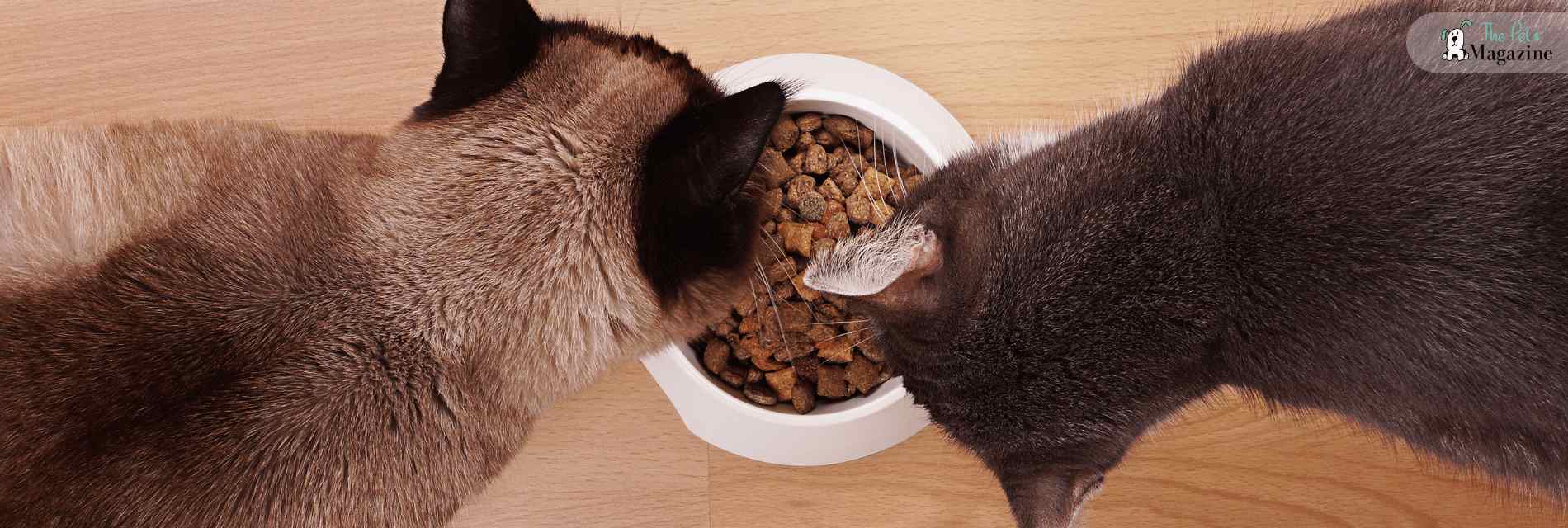
‘How much should I feed my cat, and am I feeding them enough?’ is a common topic that all cat parents worry about at some time or another. It is natural to want to keep our feline companions happy and healthy but it is also our responsibility to make sure that we are not overfeeding them.
It is important to provide them with just the right amount of food to help them maintain their energy levels, maintain their optimal health, and avoid weight-related issues. So, in this guide, we will delve into feeding guidelines for cats.
We will also talk about what cats eat, age-appropriate portions and calorie requirements for cats. So, dive in if you want the answer to your question, ‘how much should I feed my cat?’
Factors to Consider When Deciding How Much to Feed Your Cat
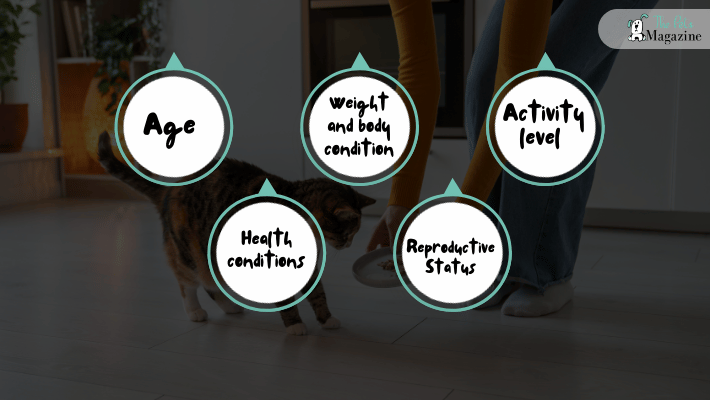
When determining ‘how much should I feed my cat’, you need to consider factors such as age, activity level, and any specific dietary requirements. We have explained these factors in detail below:
Age
A cat’s nutritional needs change as they progress through different life stages. Kittens, for instance, require more calories and nutrients to support their rapid growth and development, while senior cats may need a diet tailored to their changing metabolism and potential health concerns.
Weight and Body Condition
Your cat’s current weight and body condition should guide the amount of food you provide. Overweight or obese cats may need a calorie-controlled diet, while underweight cats may require more calories to reach a healthy weight.
Activity Level
Cats actively engaging in regular playtime and exercise will have higher caloric needs than sedentary or indoor cats.
Health Conditions
Certain health conditions, such as kidney disease or diabetes, may require specific dietary adjustments to manage the condition effectively.
Reproductive Status
Spayed or neutered cats tend to have lower energy requirements than intact cats, as their metabolism slows down after the procedure. You can easily customize your cat’s diet based on these factors.
Also ensure that they are getting proper nutrients required for optimal health and wellness. However, if you are unable to determine the portion size for your cat, then you can consult your veterinarian or a board-certified Veterinary Nutritionist.
The Importance of Portion Control for Weight Management in Cats
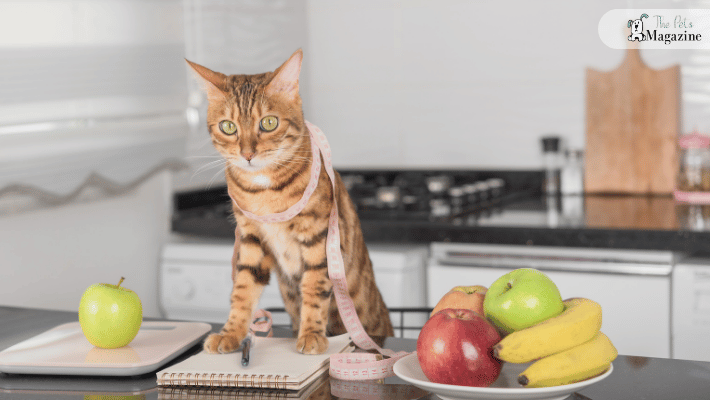
At this point, you are probably wondering why it is so important to know what the right amount of food is to give to a cat. That is because, just like us, it is also essential for our cats to maintain a healthy weight for their overall health and longevity.
However, both overfeeding and underfeeding can lead to potential health issues, making portion control a critical aspect of feline nutrition.
The former is a growing concern among domestic cats and can lead to various health problems, including diabetes, joint issues, respiratory difficulties, and a decreased life expectancy.
On the other hand, underfeeding your cat can result in nutrient deficiencies, compromised immune function, and a lack of energy. Underfed Cats may also develop poor skin and coat conditions, along with other health issues.
To maintain a healthy weight, it’s essential to follow the recommended portion sizes for your cat’s age, weight, and activity level. Here are some tips for effective portion control:
- Use a measuring cup: Instead of eyeballing portions, measure your cat’s food using a standard measuring cup or scale to ensure accurate serving sizes.
- Avoid free-feeding: While convenient, free-feeding (leaving food out all day) can lead to overeating and weight gain. It’s best to establish set mealtimes and remove any uneaten food after a reasonable amount of time (e.g., 30 minutes).
- Adjust portion sizes gradually: If you need to adjust your cat’s portion sizes, make small incremental changes over several days or weeks rather than abruptly changing the amount of food.
By maintaining proper portion control and monitoring your cat’s weight, you can help ensure they maintain a healthy body condition and reduce the risk of weight-related health issues.
Cat Feeding Guidelines Based on Life stage
Age and life stage are major factors that affect how much you should feed your cat. This is because a cat’s dietary needs change significantly throughout their life. Here’s a breakdown of feeding considerations for each stage:
Feeding Guidelines for Kittens
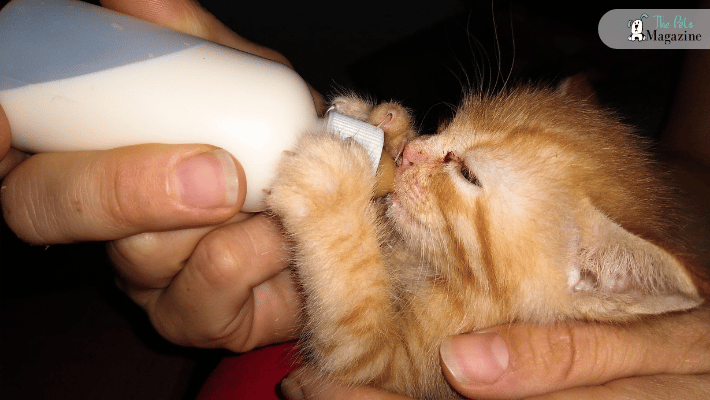
Kittens have higher nutritional demands compared to adult cats due to their rapid growth and development. Here are some feeding guidelines you need to consider for kittens:
Calorie requirements: Kittens require significantly more calories per pound of body weight than adult cats. As a general guideline, kittens need approximately 200-300 calories per pound of body weight per day.
Feeding frequency: Kittens should be fed more frequently than adult cats, typically 3-4 times per day. This helps ensure they receive the necessary nutrients to support their growth and energy needs.
Portion sizes: One of the first concerns that we have when we bring a kitten home is ‘how much cat food should I feed my kitten’. The appropriate portion size for a kitten will depend on their age and weight. Generally, kittens should be fed approximately 1/4 to 1/3 cups of high-quality kitten food per meal.
Nutrient requirements: Kitten food should be formulated with higher levels of protein, fat, and essential nutrients to support their rapid growth and development. Look for kitten foods that contain at least 30% protein and 20% fat.
Transition to adult food: Around 12 months of age, kittens can gradually transition to an adult cat food formulation. This transition should be done gradually over 7-10 days to prevent digestive upset. Another common concern of cat parents is when can kittens eat dry food. Usually when they are 6-7 weeks (about 1 and a half months) old, they are ready for solid food or dry food. They have a full set of tiny teeth by then.
Proper nutrition during the kitten stage is crucial for ensuring your feline friend develops into a healthy adult cat. So don’t forget to talk to your vet for advice and guidance.
Feeding Guidelines for Adult Cats
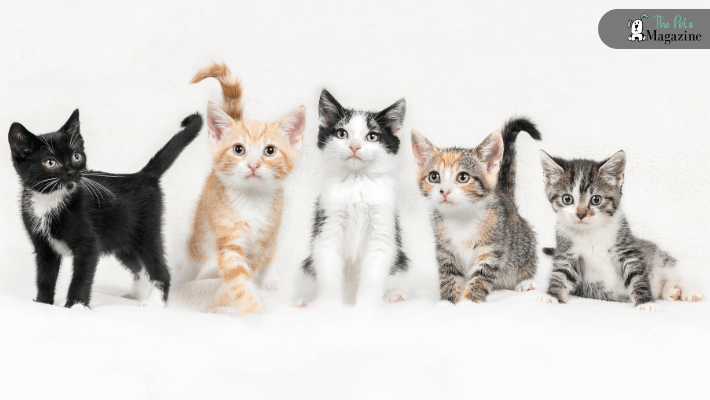
Adult cats, typically between the ages of 1 and 7 years, have relatively stable nutritional needs. Here are some general guidelines for feeding adult cats:
Calorie requirements: The average adult cat requires between 20 and 35 calories per pound of body weight per day. However, this can vary based on factors such as activity level and metabolism.
Portion sizes: Adult cats do well with two meals per day spaced out evenly. If you are wondering how much dry food I should feed my cat, then note that the recommended portion size for an average 10-pound adult cat is about 1/2 cup of high-quality dry food. Or, if your cat doesn’t like dry food then you can give them 1/3 cup of wet food per meal.
Protein: Adult cats require a diet that is high in animal-based proteins, such as chicken, turkey, or fish. Aim for a protein content of at least 30% in their diet.
Fat: Cats benefit from moderate levels of healthy fats, such as those found in animal proteins and certain plant-based oils. Fat should make up around 20-25% of their diet.
Carbohydrates: While cats have no specific dietary requirement for carbohydrates, they can be a source of energy. However, it’s essential to choose high-quality, easily digestible carbohydrate sources, such as grains or vegetables.
Remember, these are general recommendations and may differ based on your cat’s specific needs. Consult with your veterinarian to determine the appropriate portion sizes and dietary requirements for your adult cat.
Feeding Guidelines for Senior Cats
Senior cats, roughly 10 years and older, have different dietary needs than their younger counterparts. Their activity levels often decrease, and their metabolism may slow down. Here are some guidelines you need to keep in mind while feeding your aged cat:
Calorie Requirements: As cats grow older, their activity levels also start decreasing. As a result, they start burning fewer calories compared to their adult years. So, as you notice that your aged cat is not showing much interest in going out or playing, start reducing their daily calorie intake by 20-25%. You can also ask your veterinarian to help you calculate the exact amount.
Portion Sizes: You may notice that your older cat is not eating much but acting normal. This can be because their metabolism is slowing down, In that case, consider splitting your older cat’s daily meals into smaller portions and offering the same throughout the day. It will help with digestion and prevent them from overeating at once.
Protein: As cats age, they may experience muscle loss (sarcopenia). Hence, they require a diet containing high-quality protein, which is easy to digest and supports muscle health. It also plays a vital role in supporting a healthy immune system, which can be helpful for senior cats who may be more susceptible to infections.
Fat: Senior cats require essential fatty acids such as omega-3s and omega-6s for healthy skin, coat, and cognitive function. It also helps in reducing inflammation. Since senior cats are typically less active, they require fewer calories overall. So fat content should only make up around 10-15% of total calories.
Carbohydrates: Unlike protein and fat, carbohydrates aren’t an essential nutrient for cats. Moreover, senior cats with lower activity levels may have a reduced need for carbohydrates compared to younger cats. Nevertheless, they can have small amounts of complex carbohydrates such as sweet potatoes, peas, and lentils.
Wrapping Up
To sum up, you can now find out the answer to the question ‘how much should I feed my cat’ by assessing your cat’s age-specific needs and considering factors like activity level and body weight. But remember, this guide provides a general framework.
For the most personalized approach, consult your veterinarian. They can assess your cat’s health and recommend a feeding plan that keeps your furry friend happy, healthy, and purring with contentment for years to come.






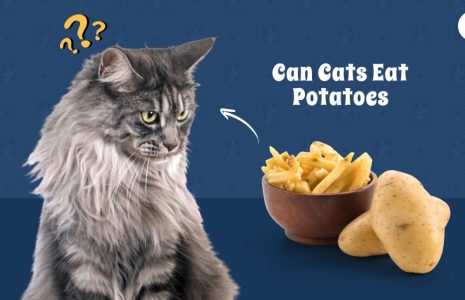
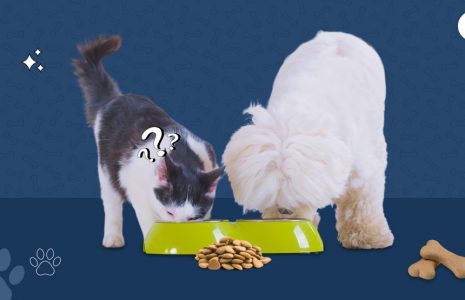
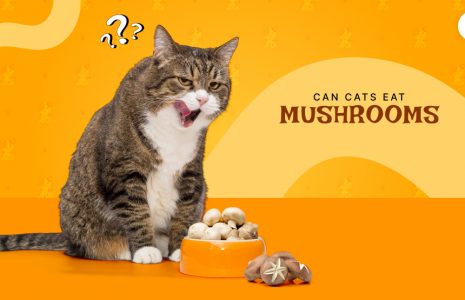
Leave A Comment